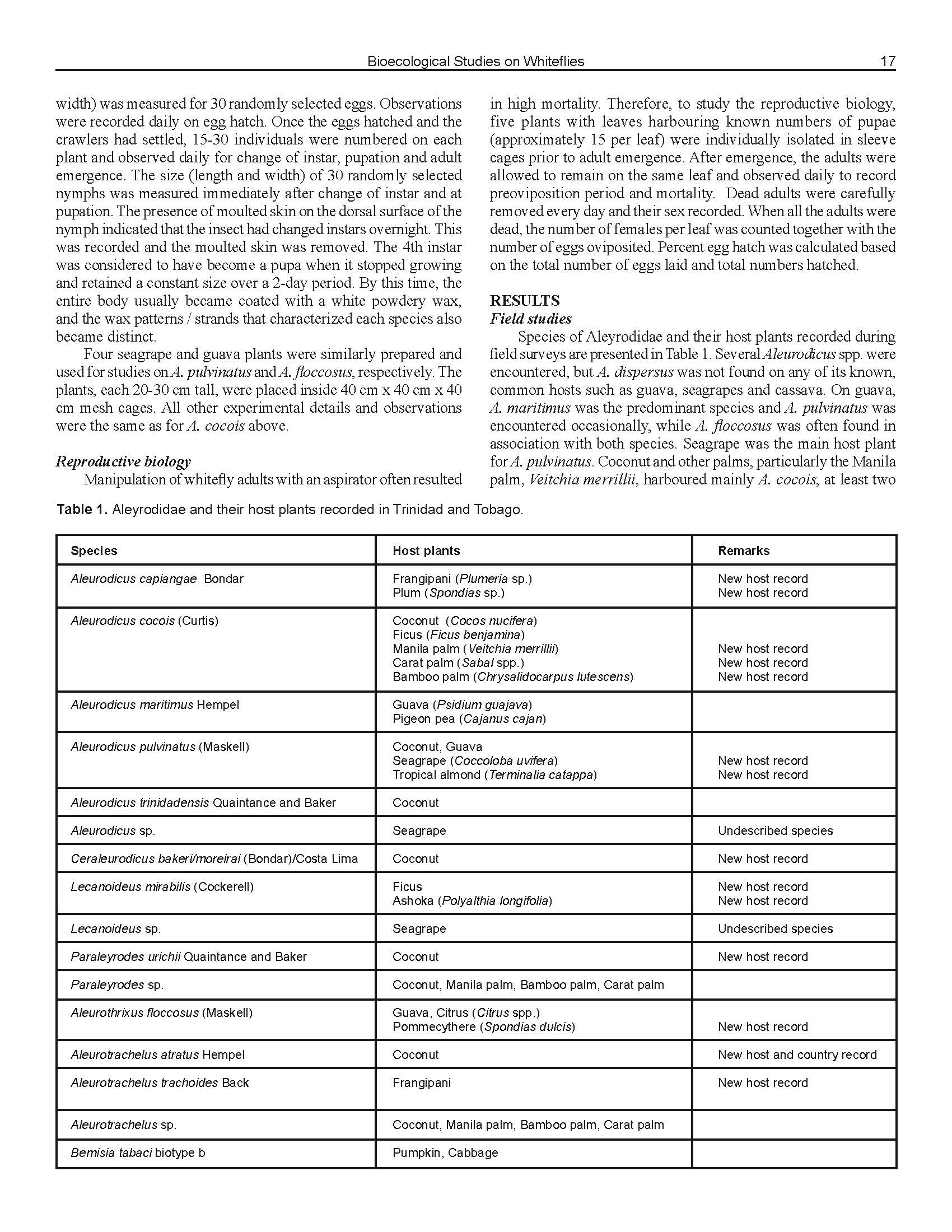Bioecological Studies on the Whiteflies (Hemiptera: Aleyrodidae) of Trinidad and Tobago
Keywords:
Whitefly, Aleyrodidae, Aleurodicinae, Aleyrodinae, Aleurodicus cocois , Aleurodicus pulvinatus, Aleurothrixus floccosus, bioecology, Trinidad and TobagoAbstract
Laboratory and field studies were carried out to elucidate the biology and ecology of indigenous species of Aleurodicus ((Hemiptera: Aleyrodidae) and other aleurodids in Trinidad and Tobago. Data are presented on the lifecycle of three commonly occurring whiteflies in Trinidad (Aleurodicus cocois (Curtis), Aleurodicus pulvinatus (Maskell) and Aleurothrixus floccosus (Maskell)) under constant temperature conditions in the laboratory. Males of all three spe[1]cies generally developed faster than females. Aleurothrixus floccosus developed faster than the two Aleurodicus spp. and oviposited the highest number of eggs per female. Egg hatch ranged from 85% in A. floccosus to 88% in A. cocois. Distinguishing features of the three species are described. During field surveys, several Aleurodicus species known to occur in Trinidad were encountered together with two undescribed aleurodicine species (Aleurodicus sp. and Lecanoideus sp.). One new country record (Aleurotrachelus atratus Hempel) and 13 new host plant records were also established. Contrary to expectations, the spiralling whitefly Aleurodicus dispersus Russell was not found either in Trinidad or Tobago. Whiteflies and their natural enemies were found throughout the year. A range of natural enemies appeared to keep whitefly populations in check. Nephaspis spp. were predominant among the preda[1]tors, while Encarsiella spp. and Encarsia spp. were predominant among the parasitoids. Natural epizootics of the entomopathogenic fungus Aschersonia aleyrodis Webb were encountered only under persistent high humidity conditions.

